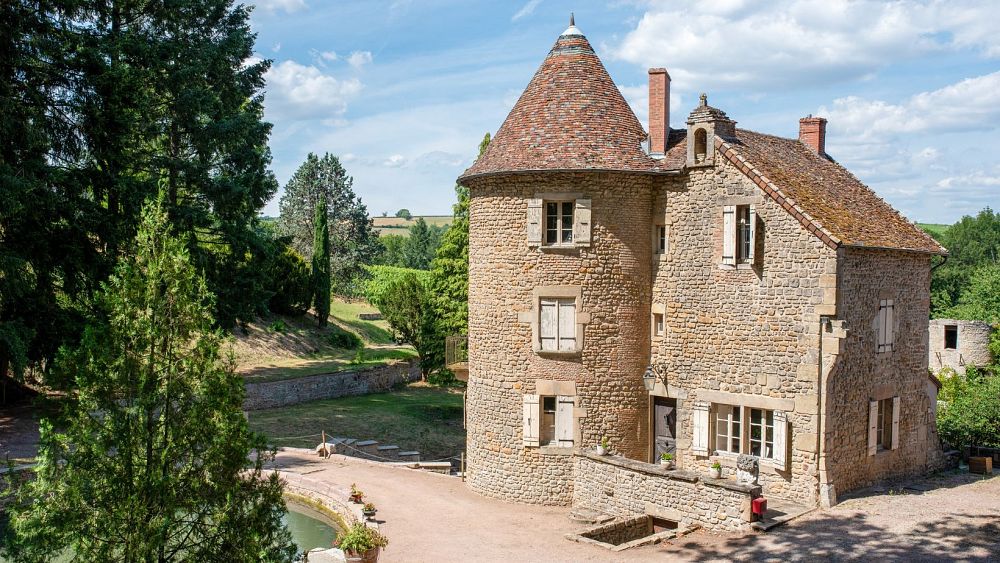Airbnb stays are on the rise across rural Europe, new tourist accommodation data shows.
For many holidaymakers, searching platforms like Booking.com, TripAdvisor and Airbnb is the crucial second step after deciding on a destination.
And the latest figures from Eurostat show that ‘platform tourism’, as it’s known, is still creeping up across the continent. The number of guest nights spent in short-term rental accommodation grew by 7 per cent to 547 million last year, up from 512 million in 2019.
But the data reveals an uneven picture of homestays popping up across Europe during this period defined by the pandemic.
Rural areas in countries such as Poland, France and Sweden saw the biggest increases, while city destinations like Berlin, Prague and Vienna still lag behind 2019 figures.
The Adriatic coast in Croatia proved to be the most popular overall, however, with a whopping 27 million guests staying in holiday homes, private apartments and rooms in 2022.
Homestays are soaring in rural France
Of the top 10 regions with the highest growth rates, nine were in rural France.
One region in particular - Franche-Comté in eastern France - saw a 93 per cent increase in guest nights in short stay accommodation last year.
Described as one of the most underrated areas of the country, it appears that more and more travellers are discovering the lush natural assets of Franche-Comté.
Its hills, meadows and spruce forests make an inviting landscape for camping and hiking in summer. While foodies are eating up its eponymous cheese - similar in flavour to Swiss Gruyère which can be found just across the border.
The regional capital of Besançon is a two and a half hour TGV train ride from Paris, or reachable by train from Strasbourg, Lyon and Zurich.
Platform tourism in France is booming more generally. Almost a quarter of total guest nights booked through the four main collaborative economy sites - Airbnb, Booking, Expedia Group and Tripadvisor - were spent in France last year.
At the other end of the scale, nights spent in Prague dropped by 52 per cent compared to 2019.
Croatia had the highest number of homestays
Three EU regions saw more than 20 million annual guest nights last year: Provence-Alpes-Côte d'Azur in France (22 million), Andalusia in Spain (25 million), and Jadranska Hrvatska in Croatia (27 million).
Together they made up almost a quarter (13 per cent) of guest nights reserved via the big four platforms.
The Jadranska Hrvatska region covers the Adriatic coast, including the popular cities of Split, Dubrovnik and Pula.
“Croatia’s accommodation mix leans in favour of private apartments and homes, accounting for over 60 per cent of commercial capacity available,” a spokesperson for the Croatian National Tourist Board (CNTB) explains.
They also attributed the strong tourist traffic to “safe travel” efforts during the pandemic and - more recently - Croatia’s entry into the Schengen Zone making holidays easier for those from European countries.
Outside of the EU, there’s been renewed interest from British, Korean, Chinese, Australian and American tourists who are making use of a new direct flight from New York to Dubrovnik.
Visit outside of summer, Croatia asks tourists
Having so many tourists occupying homes can be double-edged, of course. Dubrovnik ranked as the most over-touristed city in Europe in one recent survey.
“Croatia continues to work on diversifying its offer, extending its season, achieving greater sustainability over the next few years, as an increase in guests during the peak season is not feasible,” the CNTB spokesperson tells Euronews Travel.
There are signs the country is heading in the right direction. Airlines have started flying earlier in the year and offering flights for a long period - mostly from April through to October.
In particular, the capital of Zagreb is becoming a more popular off-season spot.
“The Adriatic coast has always been a draw for tourists, with one of the most indented coastlines in Europe, with over 1000 islands and a nautical paradise,” the spokesperson says.
“The Adriatic also offers some of the most pristine beaches and swimming waters, ranking amongst the cleanest in Europe.”
Whether in Airbnbs or hotels, a greater spread of tourists throughout the year is sure to help visitors enjoy its rich nature and sunny coastline in more peaceful numbers.


